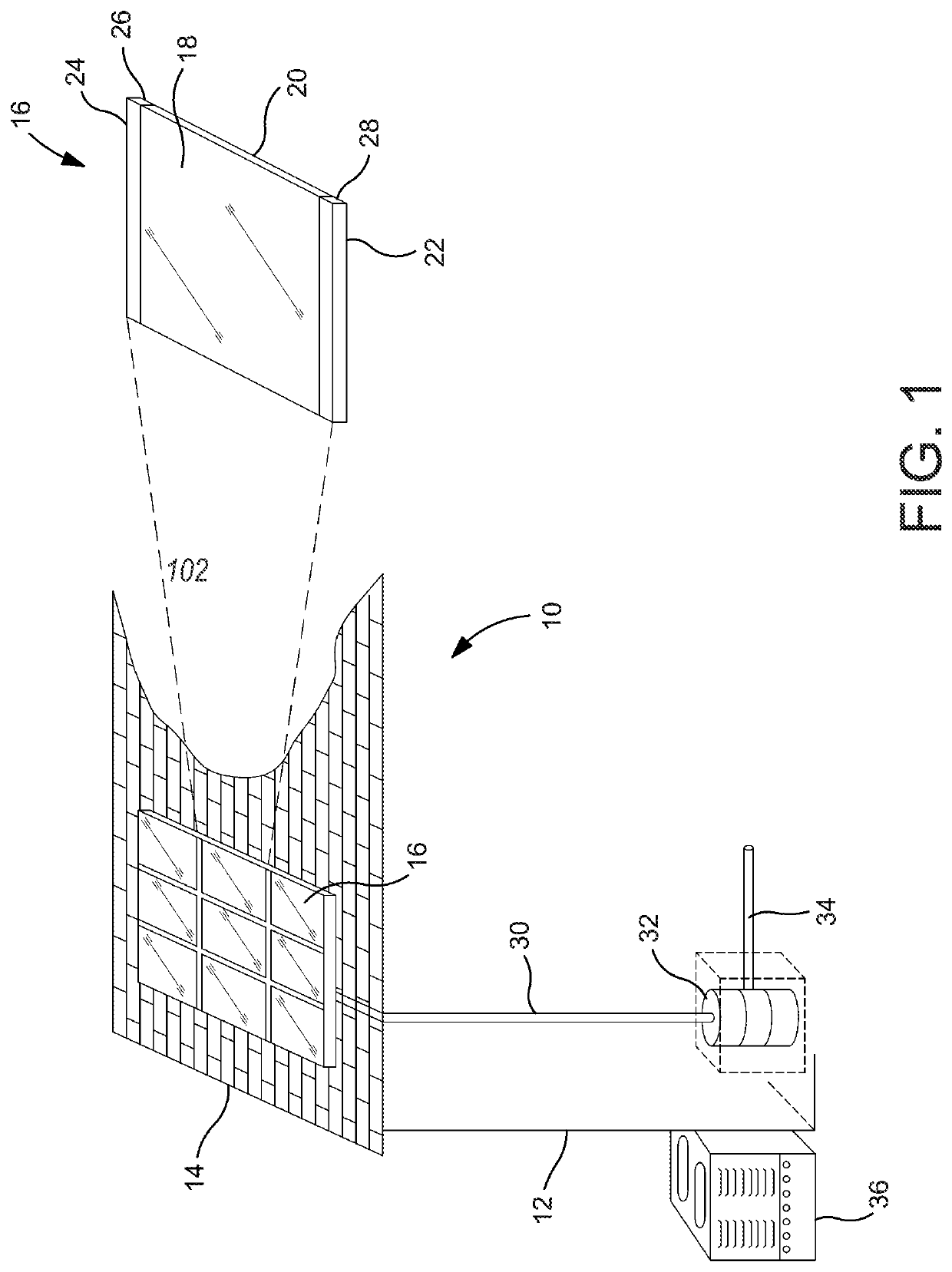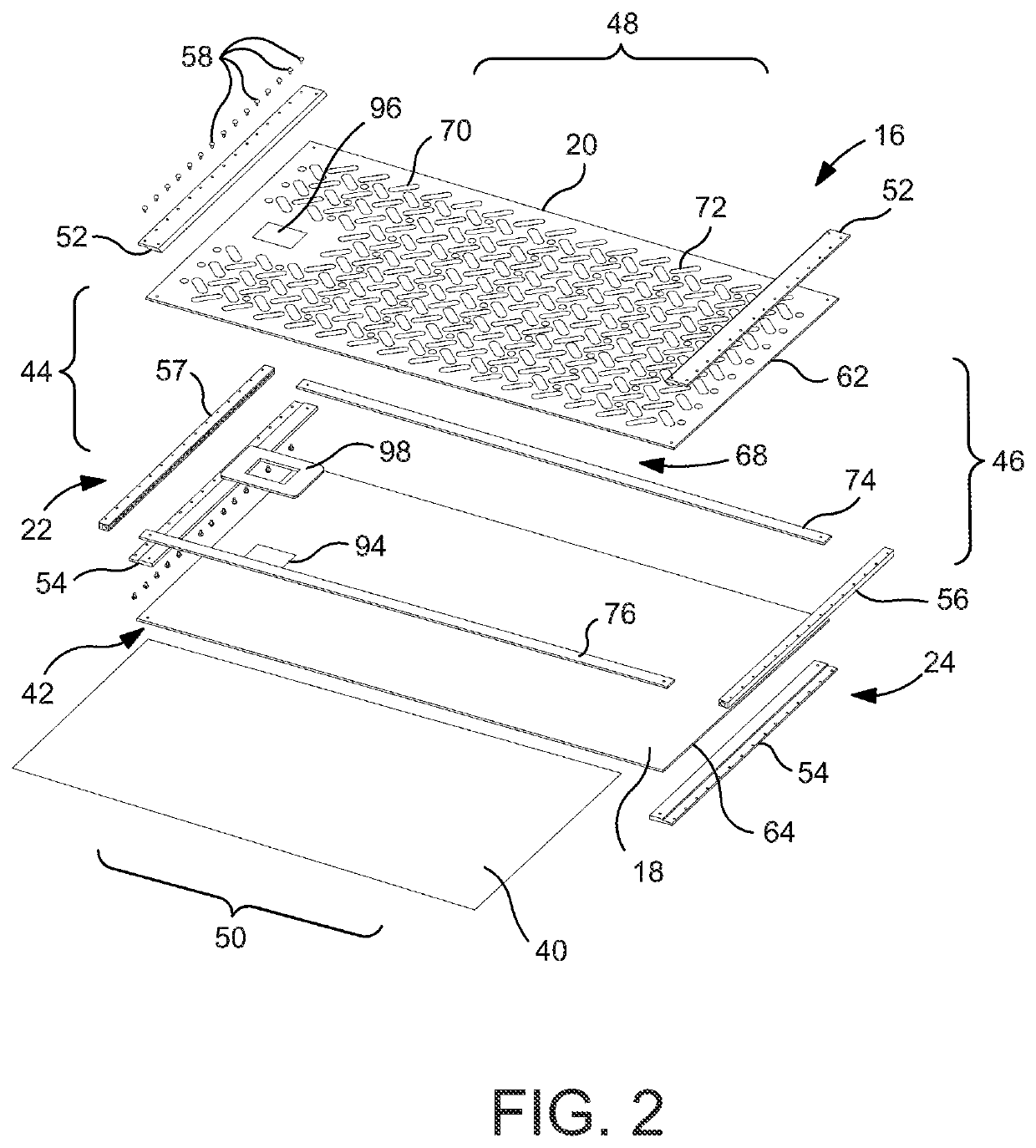Solar energy system
a solar energy system and solar energy technology, applied in the field of solar energy systems, can solve the problems of extensive plumbing of existing hybrid panels (heat and electric), and achieve the effects of reducing the cost of production, facilitating and inexpensive production, and ensuring the smooth flow through the channel
- Summary
- Abstract
- Description
- Claims
- Application Information
AI Technical Summary
Benefits of technology
Problems solved by technology
Method used
Image
Examples
Embodiment Construction
[0037]Turning first to FIG. 1, there is shown a schematic view, partially exploded illustrating a solar energy system 10 constructed in accordance with the present invention. As can be seen, there is a building structure 12 with a roof 14 with an exposure to some form of sunlight, albeit direct or indirect. The building structure 12 can, of course, be any type of building that has a need for electricity and / or heated water. As will be seen, the present invention can be used with a structure that is devoted entirely to the production of heat, heated water and / or electricity i.e. a dedicated structure or frame and not serve any other purpose such as for inhabitants or a structure for housing occupants.
[0038]As seen in FIG. 1, the roof 14 has a plurality of solar panels 16 arranged in columns (vertical alignment) and in rows (lateral alignment). As shown, there are nine (9) solar panels 16, however, as will become clear, the number of panels, their size and orientation may vary dependi...
PUM
 Login to View More
Login to View More Abstract
Description
Claims
Application Information
 Login to View More
Login to View More - R&D
- Intellectual Property
- Life Sciences
- Materials
- Tech Scout
- Unparalleled Data Quality
- Higher Quality Content
- 60% Fewer Hallucinations
Browse by: Latest US Patents, China's latest patents, Technical Efficacy Thesaurus, Application Domain, Technology Topic, Popular Technical Reports.
© 2025 PatSnap. All rights reserved.Legal|Privacy policy|Modern Slavery Act Transparency Statement|Sitemap|About US| Contact US: help@patsnap.com



